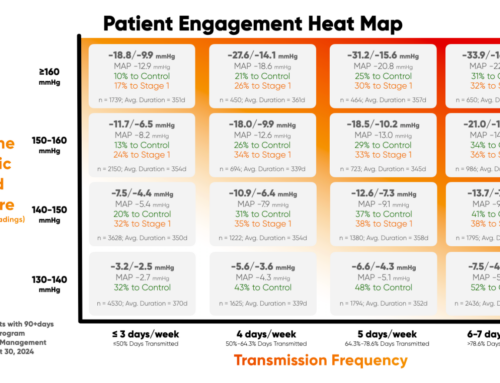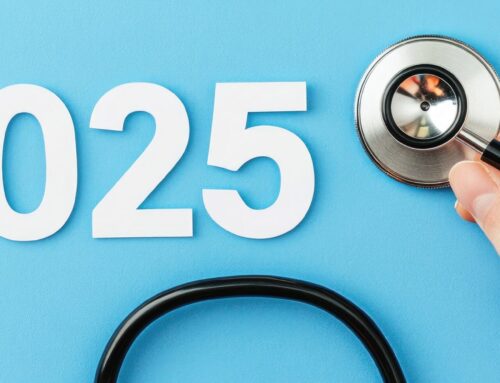Healthcare delivery systems in the United States have undergone significant transformation in recent years, driven by the triple aim of improving care experience, enhancing population health, and reducing per capita healthcare costs. Central to achieving these goals is the understanding and effective management of population health, with virtual care management emerging as a leading strategy.
By aligning care management with the needs of the population, healthcare providers can foster supportive and trusting relationships with patients, which are vital for the successful delivery of primary care and care management services. These relationships not only enhance patient satisfaction but also enable the integration of patient preferences and needs into the care management process. Moreover, the increased efficiency in care delivery resulting from care management implementation helps alleviate the burden on clinical staff.
Virtual Care Management Solutions are Key to Reducing Clinical Staff Burden
In the wake of the pandemic, the healthcare industry has witnessed a paradigm shift towards hybrid care delivery models that combine in-person visits with remote care options, like Remote Patient Monitoring (RPM) and Chronic Care Management (CCM) programs.
This shift has been facilitated by the rapid adoption of virtual care solutions, including telehealth video conferencing, Remote Patient Monitoring, Chronic Care Management, and other care management programs. As the industry continues to recover from the pandemic, the ability to provide healthcare services both in person and remotely has become a necessity and a key differentiator for healthcare organizations.
Initially, many healthcare delivery organizations implemented pilot programs or limited-scope solutions to meet the sudden demands for digitally-enabled care during the pandemic. However, the real opportunity lies in scaling up these telehealth initiatives and integrating virtual care management programs as a standard and systemic approach to healthcare delivery.
This is particularly important considering the current challenges posed by the “Great Resignation” phenomenon, which has resulted in a significant reduction in the healthcare workforce. Therefore, leveraging care delivery models that enable ongoing patient care with a smaller workforce has become vital.
Incorporating virtual care management into healthcare delivery offers the flexibility to supplement in-person visits with effective virtual care programs, like RPM and CCM whenever appropriate. This approach not only helps manage staffing shortages but also ensures continued access to care for patients. A comprehensive telehealth program encompasses effectively delivered virtual care services, which can be utilized in both acute and chronic care settings.
In an acute care setting, virtual care is often facilitated by a centralized team that monitors and engages with patients in different units within a hospital. This team ensures continuous oversight of patient conditions and allows for prompt intervention when necessary. On the other hand, chronic care settings typically involve a separate team dedicated to providing remote care to patients at home, in addition to the care team responsible for home visits.
Tips for Building a Virtual Care Management Program that Mitigates Clinical Staff Burden
Creating a successful virtual care management program that mitigates the burden on clinical staff requires careful planning and implementation. Here are some key tips to consider:
Establish a Centralized Virtual Care Delivery Team
Building a specialized team that is fully trained and focused on providing virtual care is essential. This team may consist of a telehealth program manager or coordinator responsible for program ownership and organizational buy-in, a telehealth tech providing non-licensed support, a telehealth installer responsible for equipment delivery and installation, and a telehealth nurse trained in managing high-risk and targeted populations.
Expand Virtual Care Services to Include Specialists and Ancillary Care Providers
In order to ensure comprehensive and continuous care, it is important to include specialty physicians and ancillary providers in virtual care services. This helps avoid care fragmentation and ensures that patients receive the necessary expertise and support throughout their treatment journey.
Develop Policies and Procedures
Standardizing virtual care services through the development of clear policies and procedures is essential to increase staff compliance and ensure consistent decision-making. These guidelines should be regularly monitored and enforced to maintain service quality and adherence.
Train Your Team for Appropriate ‘Webside’ Behavior
As virtual visits become more prevalent, it is crucial to train healthcare providers in conducting effective and empathetic telehealth visits. Building trust and rapport with patients in a virtual setting requires attention to factors such as video quality, camera positioning, and conveying empathy effectively. By mastering “webside” behavior and manners, clinicians can ensure that patients feel heard, understood, and cared for during virtual visits.
Obtain Organizational Buy-in
Gaining support from the organization is crucial for the success of any new initiative. Communicating the goals, benefits, and risks associated with virtual care and remote monitoring helps improve staff buy-in and drives organizational transformation. Providing staff with the necessary tools and resources, tracking key performance indicators, and setting program goals will further foster engagement and facilitate continuous improvement.
Care management programs, particularly those incorporating virtual care solutions, have the potential to alleviate the burden on clinical staff by enhancing care delivery efficiency and expanding access to care. By embracing these programs and implementing the tips outlined above, healthcare organizations can achieve improved patient outcomes, better population health, and reduced costs while supporting their clinical staff in delivering high-quality care.

Enhancing Care Management by Targeting Populations with Modifiable Risks and Minimizing Clinical Staff Burden
Achieving optimal health outcomes requires addressing modifiable risk factors that individuals have control over. By minimizing these risks, patients can increase their chances of living long and productive lives.
Healthcare providers play a crucial role in identifying populations with modifiable risks and implementing targeted care management strategies. This approach not only reduces the burden on clinical staff but also leads to cost savings, improved quality of care, and enhanced patient experiences.
While basic elements of care coordination, such as effective communication and information exchange, benefit all patients, it’s essential for providers to recognize which patients would benefit from more intensive care management programs. This is particularly relevant for high-risk and high-cost populations, as interventions may have a limited impact on other patients.
Sustainable resource management requires accurate identification of individuals and entire populations that can control risk factors and improve their health outcomes. By focusing on select populations, such as those with chronic health conditions, healthcare practices can enhance the quality, safety, and efficiency of care, while reducing the burden on clinical staff.
Consider a population of patients who are at risk of developing chronic diseases like type 2 diabetes. The progression from glucose intolerance to diabetes can be influenced by factors such as diet and exercise. Within this “rising risk” patient population, individuals may be at different stages of readiness to change and modifiable risk. Understanding these nuances allows providers to offer appropriate services at the right time.
Transitions of care between different healthcare settings, such as from hospital to primary care, often pose challenges and can result in adverse events, readmissions, and increased healthcare costs. Identifying transitions with the highest risks and targeting care management services to patients during those critical periods can optimize resource utilization and lead to better cost and quality outcomes.
Modifying risk factors goes beyond improving health outcomes; it involves addressing psychosocial concerns and helping patients achieve their individual goals for better personal health. Factors like ethnicity, age, metabolic risk factors, smoking status, chronic disease burden, and psychosocial issues such as caregiver support availability help practices and payors identify individuals and populations that may benefit from care management services.
Understanding these variables assists in designing appropriate supports to help patients achieve their goals. Even when risks appear non-modifiable, coordinating services can still bring benefits by clarifying roles and avoiding duplication.
In supporting the identification of populations with modifiable risks, health policies should consider inclusive eligibility criteria for patients receiving care management. Different care services, such as RPM programs, should be available based on individual needs, and policies should establish metrics to assess the necessity and outcomes of virtual care management.
By targeting patient populations with modifiable risks and implementing effective care management strategies, healthcare providers can alleviate the burden on clinical staff, improve patient outcomes, and contribute to a more sustainable and efficient healthcare system.
Effective Personnel Identification and Training for Streamlined Care Management and Reducing Clinical Staff Burden
In order to reduce the burden on clinical staff, it is crucial for healthcare practices to accurately identify and train personnel who are suitable for providing the required care management services. The selection of healthcare professionals should be based on the specific needs of the target patient population, including clinical and psychosocial aspects.
Different care management services may require different skill levels and backgrounds. For instance, clinical pharmacists possess extensive training in medication reconciliation, while social workers are adept at assessing psychosocial needs and connecting patients with community resources.
Once the needs for care management services have been determined, practices need to decide on the most effective staffing approach to alleviate the burden on clinical staff. Two possible approaches are worth considering: (1) assigning or hiring a dedicated care manager, or (2) distributing care management functions across multiple clinic personnel.
Dedicated care managers may come from diverse backgrounds, such as pharmacists, registered nurses, social workers, clergy, dietitians, unlicensed health coaches, child and family advocates, and medical assistants. The allocation of clinically oriented care management services, such as medication reconciliation, should be based on the training and licensing level of the personnel involved.
Resource constraints may necessitate the distribution of care management services among existing practice staff, particularly for smaller practices that may not have the capacity to hire additional personnel. Initially, the fee-for-service payment model may limit the ability of resource-constrained practices to align CM services with the needs of their patient populations. Based on this, in value-based payment models, the clinical benefits of aligning clinic staffing with patient needs becomes more cost-effective and significantly reduce the burden on clinical staff.
Delivering optimal care management services requires matching the right personnel with the appropriate roles. Individuals providing virtual care services must establish trust with patients and other members of the care team, emphasizing the value of interpersonal skills. In addition, the care team’s culture should be open to integrating individuals who deliver care management services, which may require a shift in the overall culture of the care team.
This proactive and coordinated approach to care represents a departure from the traditional disease-focused, episodic in-person care paradigm. As virtual care management programs, including Remote Patient Monitoring and Chronic Care Management, are integrated into practice services, the roles of physicians and other care team members may need to evolve. Successful and sustainable integration of care management services is more likely to occur when accompanied by a broader transformation of the practice, its workforce, and its workflows.
Considerations for Remote Physiologic Monitoring Services and Platforms
Having the capability to connect patients, especially those with asymptomatic chronic illnesses or mild-to-moderate symptoms, with their treating clinicians is highly desirable, particularly in cases where symptoms escalate. Implementing a Remote Patient Monitoring (RPM) program can fulfill this objective by providing proactive and continuous care through user-friendly, cellular-based remote monitoring devices such as blood pressure monitors or pulse oximeters.
To optimize efficiency for clinicians, a combination of remote physiologic monitoring services, remote therapeutic monitoring services, and stepped levels of clinician supervision can be protocoled, enabling successful monitoring of multiple patients based on their risk factors and symptom severity. Flexible staffing protocols based on acuity can ensure the appropriate assignment of available support resources. This approach can significantly enhance patient satisfaction, adherence, and outcomes, while simultaneously reducing the burden on clinical staff.
How Healthcare Providers Can Improve Outcomes with Care Management Programs like Remote Patient Monitoring and Chronic Care Management
To optimize a patient’s health status and the experiences of healthcare professionals, RPM and CCM platforms can incorporate various features, including symptom management, patient education, well-being support, and communication with healthcare providers.
Patients can actively engage with educational content and receive well-being support within virtual care management programs. At the same time, clinicians can stay updated on patient progress through vital sign tracking and symptom monitoring. This near real-time sharing of patient data enables timely interventions and effective management of health concerns.
Symptom management involves monitoring vital signs such as blood glucose levels, temperature, heart rate, blood pressure, and oxygen saturation. These values can be tracked over time and presented graphically to patients for easy visualization of trends and changes.
If a vital sign falls outside the normal range for a condition such as chronic obstructive pulmonary disease (COPD), the patient receives feedback, and the assigned clinician can also be notified, allowing them to initiate communication via chat or phone to address the concern.
Patients also have the ability to initiate chat conversations with their assigned health care professionals at any time. A built-in daily health check assesses chronic symptoms, helping determine symptom severity and the need for emergency medical support.
How Patients Can Take A More Active Role in Their Care Plan with Vi
Patients can view a temporal representation of their symptoms on a symptom tracker graph, enabling them to observe their progress over time and empowering them in effective self-management. RPM and CCM programs can encompass a comprehensive library of educational content, providing patients with resources to educate themselves about chronic disease symptoms, symptom management, and overall well-being.
The content can include evidence-based stress reduction strategies such as mindfulness and relaxation exercises, known for their effectiveness in reducing stress levels among patients with chronic illnesses. These strategies should be easily accessible as they help reduce the levels of adrenaline and cortisol in the body, which are often elevated in patients suffering from chronic conditions and other health problems.
Even during periods of extreme stress, exercises focusing on breathing and relaxation can alleviate negative thoughts, moods, and feelings, facilitating faster recovery. Additional self-management strategies like progressive muscle relaxation exercises, guided visualization, and meditation can be incorporated to support improved physical and mental well-being.
How RPM Can Alleviate Clinician Burnout
Clinician burnout affects approximately one in three doctors at any given time, posing risks to their well-being and the quality of healthcare delivery. Remote Patient Monitoring (RPM) offers a potential solution by leveraging digital technology to collect health data from patients remotely and transmit it electronically to healthcare providers.
By continuously monitoring patients’ vital signs using RPM devices like pulse oximeters, blood pressure cuffs, or weight scales, care teams can make informed decisions in near real-time regarding necessary interventions for chronic conditions such as congestive heart failure, diabetes, or respiratory complications.
Traditionally, healthcare providers relied on regular office visits to monitor biometrics like heart rate, blood pressure, cognitive function, blood glucose levels, and vitamin deficiencies in patients with chronic conditions. These frequent visits often lead to stress for both patients and providers, resulting in increased appointment cancellations and decreased compliance.
RPM enables healthcare providers to remotely monitor the health information of high-risk patients, reducing the need for emergency department visits and minimizing stress levels for both patients and providers. More effective care management through RPM fosters greater patient engagement and improved health outcomes, consequently alleviating clinician burnout.

Recognizing the Indicators of Healthcare Provider Burnout
Healthcare provider burnout refers to a state of chronic job stress and reduced job satisfaction that often occurs when treating high-risk patients. The management of chronic diseases and the demanding nature of emergency department work can impact not only patients’ health outcomes but also the well-being of overwhelmed and anxious healthcare providers.
The term “burnout” was introduced in the 1970s to highlight characteristics such as emotional exhaustion, cynicism, de-personalization, decreased professional efficacy, and diminished personal accomplishment. The consequences of burnout manifest as reduced job satisfaction, increased absenteeism, higher turnover rates, and a sense of cynicism that can spill over into healthcare professionals’ personal lives, leading to unhappiness, anxiety, depression, isolation, substance abuse, strained relationships, and even divorce.
Recent studies conducted by the Mayo Clinic indicate a surge in burnout and inadequate sleep among healthcare providers and caregivers since the onset of the pandemic. Numerous other research papers have also shown that a significant percentage of medical staff, especially nurses and front-line healthcare workers in high-infection areas, experienced heightened levels of anxiety and depression during and after the pandemic.
Healthcare provider burnout has been linked to sub-optimal patient outcomes, lower patient satisfaction, and an increased risk of errors in healthcare delivery, potentially resulting in malpractice suits and substantial costs for healthcare systems. Common sources of stress for healthcare professionals include:
-
Inefficient care management
-
Insufficient patient compliance
-
Excessive hospital readmissions
Remote Patient Monitoring (RPM) emerges as a valuable solution to alleviate the burdens associated with these stressors.
How Remote Patient Monitoring Alleviates Stress in Care Plans
Stress exacerbates both acute and chronic health conditions, making it challenging to achieve optimal health outcomes when patients and clinicians are burdened with additional steps and administrative tasks. Streamlined workflows and centralized communication are crucial for efficient care plan implementation, as the absence of these elements intensifies clinician stress.
Patient-generated data provides valuable insights that care providers would not otherwise have access to, expanding their resources for assessment, diagnosis, and treatment planning. Collecting critical health information enables clinicians to improve health outcomes, while patient monitoring systems help streamline administrative tasks and services.
Remote vital sign monitoring solutions can track indicators such as heart rate, blood oxygen levels, and respiration rate. This near real-time patient information enables healthcare professionals to triage individuals remotely, deciding whether further medical attention is necessary or if the risk of exposure can be reduced by staying at home.
By utilizing RPM services and cellular-enabled remote monitoring devices, healthcare providers can deliver customized and secure care management. Reducing the stress caused by overwhelming physical appointments allows clinicians to attend to a higher volume of patients each day, leading to increased job satisfaction and reduced stress levels.
Continuously analyzing health data and employing telemedicine, medication management, and personal health monitoring programs also enhance healthcare access for communities and regions with limited access to large health systems. Responding to phone calls on mobile devices is more manageable than scheduling and conducting office visits. Supporting care management strategies with Remote Patient Monitoring streamlines workflows, making care delivery more efficient and less taxing.
RPM devices securely transmit patient data to third-party HIPAA-compliant platforms, which analyze the data and present it to clinicians through user-friendly dashboards. This enables timely detection of concerning trends, allowing for intervention before hospitalization becomes necessary. Nursing staff or physician assistants can monitor patients and identify trends that require clinician intervention for treatment adjustments. By functioning at the top of their licensure, clinicians can focus on their specialties and alleviate burnout associated with administrative tasks.
Reduce Your Clinical Staff Burden and Care Team Burnout with HealthSnap
Empower your dedicated clinicians and administrators to overcome burnout with the help of HealthSnap. By harnessing the capabilities of Virtual Care Management Programs like Remote Patient Monitoring (RPM) and Chronic Care Management (CCM), you can streamline workflows, alleviate anxiety, foster stronger patient-provider relationships, and enhance job satisfaction.
HealthSnap’s state-of-the-art virtual care management platform is specifically tailored for healthcare providers, placing a strong emphasis on cellular-enabled devices that enable seamless patient monitoring. Whether you seek to improve chronic disease management or optimize overall patient care, HealthSnap is your trusted partner.
To learn more about the features and services offered by our Remote Patient Monitoring and Chronic Care Management programs, we invite you to schedule a complimentary demo. Simply call us at 888-780-1872, and our team will be delighted to arrange a demo session for you. Alternatively, explore the options available on our Contact Us page to learn more about HealthSnap’s virtual care management program offerings.











